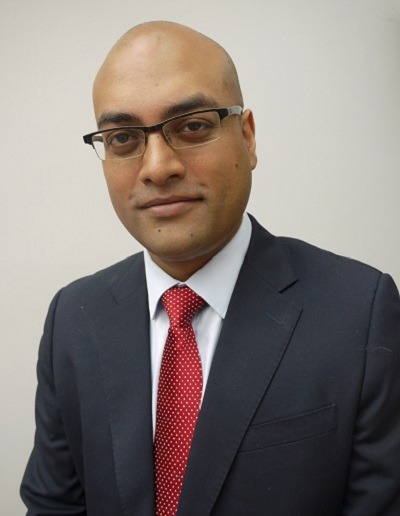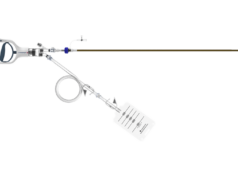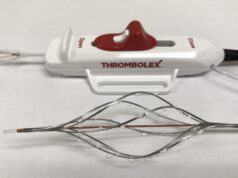
Dedicated venous stents can be effectively used to relieve outflow obstruction at one year following thrombotic disease in both the acute and chronic setting, according to the prize-winning research presented at the European Venous Forum (EVF; 2–4 July, Saint Petersburg, Russia). Prakash Saha, King’s College London, Guy’s and St Thomas’ NHS Foundation Trust, London, UK, said, however, that as deep venous reconstruction is challenging, complex cases may require reintervention or adjunctive procedures.
Deep venous reconstruction is a minimally invasive therapy for the treatment of venous outflow obstruction in both the acute and chronic setting. Saha told delegates that his group together with Stephen Black, Guy’s and St Thomas’ NHS Foundation Trust, recently has set up a tertiary multidisciplinary service for deep venous reconstruction. He presented one-year patency results from a study set to evaluate early clinical outcomes following endoluminal stenting using first-generation dedicated venous stents.
A prospective database of elective and urgent patients who underwent percutaneous deep venous reconstruction (from May 2012 to May 2015) was analysed. Investigators calculated patients’ CEAP and assessed cases intraoperatively using duplex ultrasound one day following intervention. Duplex ultrasound was performed at two weeks, three months and at six month intervals and then yearly. Imaging was reviewed for stent patency, with the need for adjunctive procedures recorded. Venous Disability Score (VDS) and Villalta Score were taken before and after intervention at six weeks, six months and then yearly.
During the studied period, the investigators treated 140 patients (80 females, median age 39 years) and inserted 347 stents. The devices used were Zilver Vena (Cook Medical), Vici (Veniti) and Sinus-Venous (Optimed). The median follow-up was 16 months. One patient died and another was lost to follow-up. Fifty seven patients were treated for acute disease because of residual stenosis following catheter-directed thrombolysis for acute iliofemoral deep vein thrombosis. Amongst patients with chronic venous disease, four were treated for occlusive post-thrombotic disease and 77 for occlusive post-thrombotic disease (C3=10, C4a=48, C4b=9, C5=5 and C6=9). In acute patients, results were positive, with primary patency at 78% and primary-assisted patency at 92% at one year. The secondary patency rate was 94%, and the majority of patients had no post-thrombotic changes on Villalta scoring. In the VDS scoring system, the disability score decreased to almost zero. “We did have patients in whom the treatment has not been completely effective. For example, one patient had ulceration despite a patent stent. There is still a lot to learn about the aetiology of the disease process,” he noted.
The chronic patients, on the other hand, were more difficult to treat and the outcomes in this group of patients were not as good as in the acute setting. At one year the primary patency rate was 58%, primary assisted-patency rate was 69% and secondary patency was 71%. Ulcer healing was achieved in six out of nine patients (67%). Preoperatively the majority of patients had severe post-thrombotic change and postoperatively the Villalta Score decreased from 15 to 6 (p<0.001). “It should be made clear to the patient that we may not alleviate all the symptoms, patients should be given realistic expectations about how much improvement they are going to get with the primary focus for a return to function,” Saha said.
Thirty per cent of patients required reintervention for stent occlusion (partial or complete). This was most common in the first 56 days following intervention, with experimental data suggesting that this was the time needed for endothelialisation of the stent.
In conclusion, he said, deep venous reconstruction is challenging, and patients with complex disease may require intervention or adjunctive procedures. Comparison of the studies evaluating the first generation of venous stents must factor in the aetiology of the lesions that are being treated. “Stent patency is better following lysis for acute iliofemoral deep vein thrombosis and long-term outcomes are needed to assess whether the early benefit is maintained. There is also a need to identify factors that are associated with early and late stent occlusion. Regular duplex ultrasound surveillance is required to maintain stent patency following intervention,” he added.
Saha told Vascular News: “We now plan to publish these outcomes. The main aim of future research is to examine why stents block and look at ways to prevent this from happening. We have in vitro, experimental and clinical trials currently running in this area.” He added that another objective is to reach consensus with leaders in the field on the best way to treat these patients: “Stephen Black is leading the way in the European Society for Vascular Surgery and I am on the research committee of the American Venous Forum. Between us, we would like to bring those with the most experience together in order to consolidate knowledge and offer the best treatment to our patients.”









